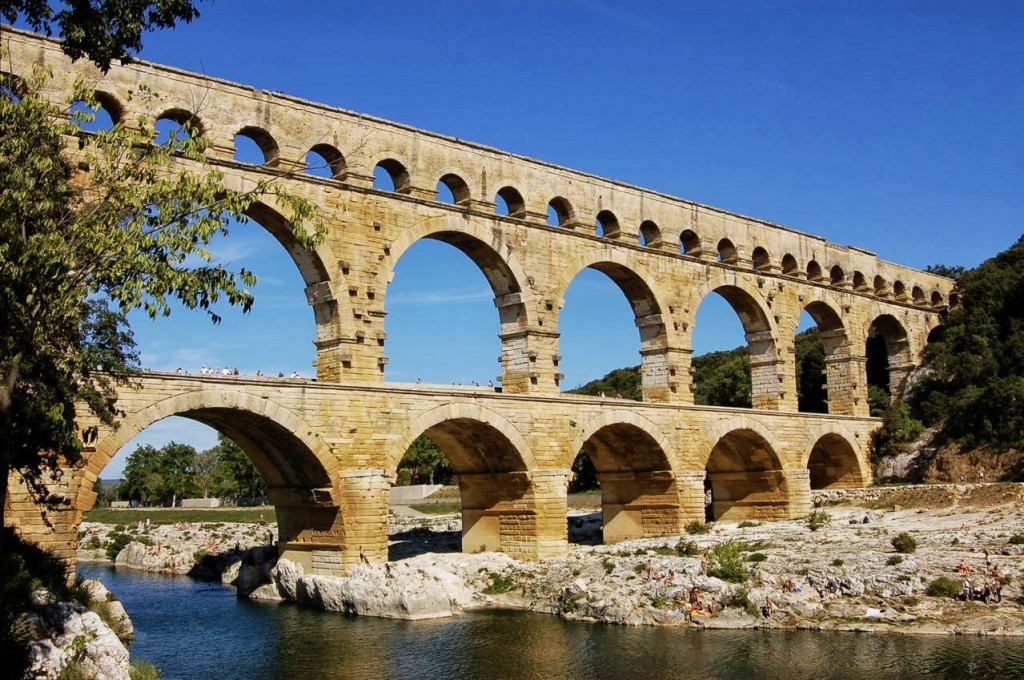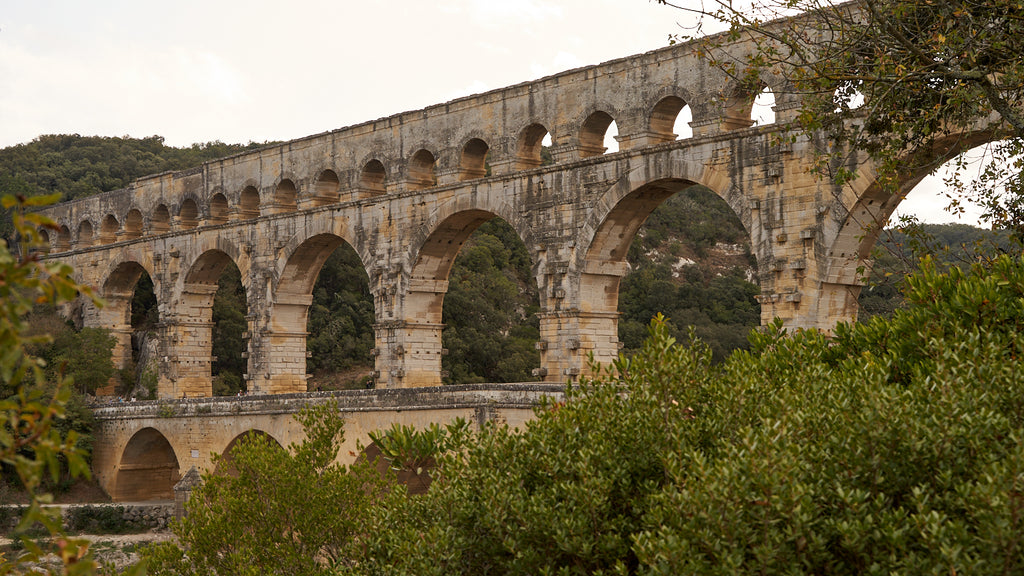The Pont du Gard, a magnificent Roman aqueduct bridge built between 40-60 AD, stands as an enduring symbol of Roman engineering brilliance in Provence, France. Designed to transport water over 50 kilometers (31 miles) to the Roman colony of Nemausus (modern-day Nîmes), this iconic structure is not only the tallest of all Roman aqueduct bridges but also one of the most well-preserved monuments from antiquity.
A Marvel of Roman Engineering
The Pont du Gard is an exceptional example of Roman engineering, demonstrating the advanced techniques the Romans used to create long-lasting infrastructure. Made from Shelly limestone, the bridge consists of three tiers of arches, meticulously aligned, and stretches across the Gardon River. With a height of 48.8 meters (160 feet), it is an awe-inspiring sight that showcases the skill and precision required to construct such a monumental structure.

At the time of its construction, the aqueduct was a groundbreaking solution to the problem of supplying water to the Roman colony of Nemausus, which was situated in a region that lacked a reliable water source. The Pont du Gard allowed water to flow smoothly and consistently from its source to the city, demonstrating not only architectural brilliance but also the Roman commitment to public utility.
Architectural Dimensions and Design
The bridge stretches a total length of 275 meters (902 feet) at its top tier, originally 360 meters (1,180 feet). The middle tier measures 242 meters (794 feet), while the lower level spans 142 meters (466 feet). The width of the bridge varies, with the maximum width reaching 6.4 meters (21 feet), while the aqueduct itself measures 1.2 meters (4 feet) in width. These dimensions reflect the precision with which the Romans built their infrastructure to accommodate both structural integrity and the flow of water.

The uppermost level of the Pont du Gard was designed to carry the flow of water, which was estimated at an impressive 40,000 cubic meters. This capacity highlights the foresight and engineering expertise the Romans employed in creating a system that would not only serve its practical purpose but also stand the test of time.
Durability and Legacy
What truly sets the Pont du Gard apart is its remarkable durability. Despite being nearly two millennia old, the bridge has withstood wars, natural disasters, and periods of neglect. The enduring stability of the structure speaks to the quality of materials used and the precision of its construction. The Romans were masters of incorporating natural terrain into their designs, ensuring that the water flow maintained a gentle gradient for its journey. This engineering foresight contributed to the aqueduct’s long-lasting effectiveness and structural resilience.

Cultural and Historical Significance
Since 1985, the Pont du Gard has been recognized as a UNESCO World Heritage site, celebrated for its exceptional preservation, historical importance, and architectural ingenuity. The bridge is more than just an infrastructure project; it is a testament to the Roman Empire’s ability to create lasting monuments that combined utility, artistry, and grandeur.

The use of arches in the design not only provided structural stability but also imbued the aqueduct with a sense of majesty and scale, making it a visual and functional marvel. The Pont du Gard is an iconic example of how the Romans blended engineering with aesthetics, creating structures that were both useful and beautiful.
Modern-Day Reverence
Today, the Pont du Gard continues to attract millions of visitors annually, eager to marvel at its imposing size, intricate design, and historical significance. The bridge has become a symbol of Roman ingenuity, drawing attention to the lasting legacy of the empire in shaping modern engineering and architecture.

Visitors to the site can also explore a museum dedicated to the construction and use of the aqueduct, providing further insight into the remarkable achievements of the Romans. The museum highlights the technological innovations and logistical challenges faced by the engineers who designed the Pont du Gard, adding layers of understanding to the impressive structure.
Conclusion
The Pont du Gard is not only a stunning example of ancient engineering but also a testament to the enduring legacy of the Roman Empire. Through its exceptional preservation, it continues to inspire awe and admiration, showcasing the ingenuity of a civilization that changed the world in ways that still resonate today. The Pont du Gard stands as a lasting tribute to the Roman commitment to innovation, utility, and the enduring beauty of their architectural masterpieces.

